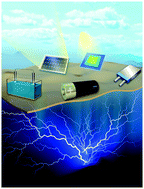Atomically thin non-layered nanomaterials for energy storage and conversion
Abstract
After the discovery of graphene, two-dimensional nanomaterials with atomic thickness and large lateral size have attracted tremendous research interest due to their high specific surface areas, exotic electronic structures, and fascinating physical and chemical properties. Even though recent studies are mainly focused on atomically thin nanomaterials with layered structures due to their easy preparation and characterization, the investigation of non-layered nanomaterials is also proceeding as new types of ultrathin nanostructures are constantly being created, such as metals, metal oxides, metal chalcogenides, some transition metal dichalcogenides, and perovskites. Here in this review, we comprehensively summarize the preparation methods for atomically thin non-layered nanomaterials, study their exotic electronic structures, introduce electronic-structure manipulation strategies, and provide an overview of their applications in energy storage and conversion, with particular emphasis on lithium-ion batteries, sodium-ion batteries, catalysis of hydrogen evolution, oxygen evolution, CO2 reduction, CO oxidation reactions, etc. The central theme of this review is to provide correlation among the materials synthesis, structural and electronic properties, and their major applications. Finally, based on current research progress, we propose future directions yet to be explored for enhanced properties and novel functionalities in practical applications.



 Please wait while we load your content...
Please wait while we load your content...